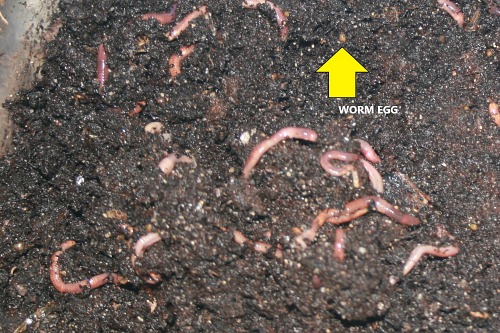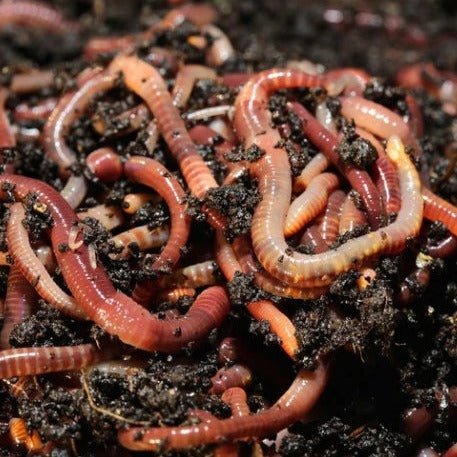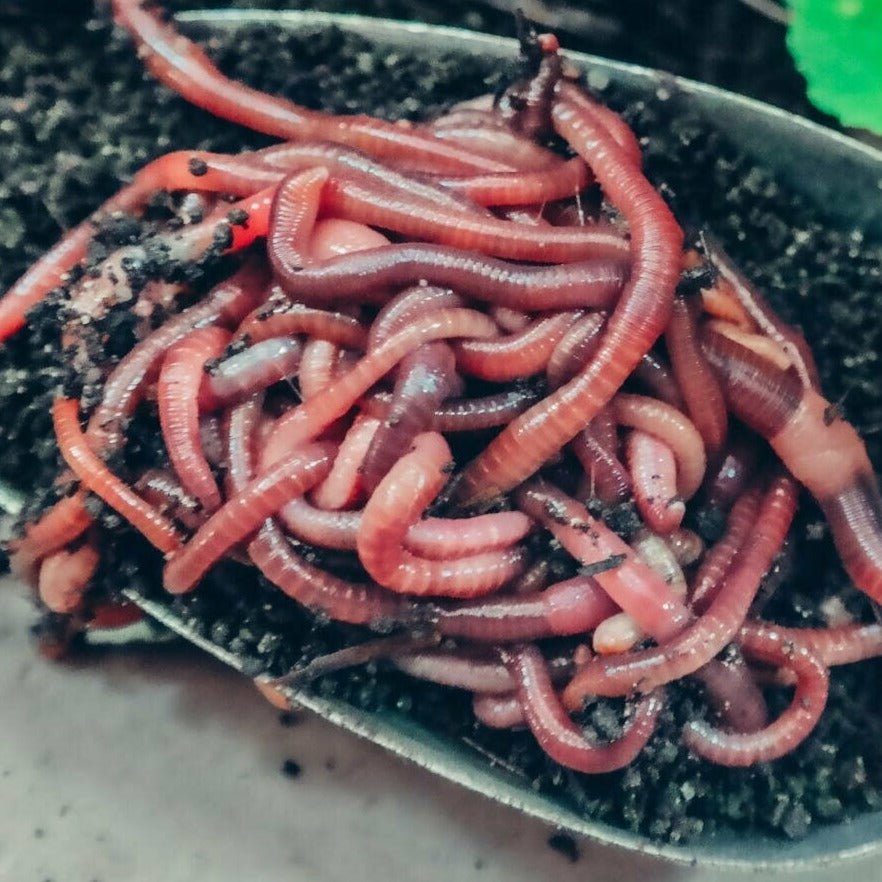Find the Best Products for Lawn Care with Red Wiggler Express for Thriving Lawns
Find the Best Products for Lawn Care with Red Wiggler Express for Thriving Lawns
Blog Article
Open the Secrets of Red Wigglers: Your Guide to Composting Success
The assimilation of red wigglers into composting techniques offers a considerable opportunity for boosting soil health and advertising sustainability. These organisms are not merely efficient recyclers of organic waste; they provide a myriad of advantages that can transform garden management. Recognizing their requirements and behaviors is essential for enhancing their possibility, from establishing a proper worm bin to feeding them the appropriate materials. As we explore the necessary parts of effective vermicomposting, one may ask yourself exactly how these little animals can lead to an extra lively and effective yard environment.

What Are Red Wigglers?
(Red Wiggler Express)Red wigglers, scientifically recognized as Eisenia fetida, are a varieties of earthworm primarily utilized in composting as a result of their exceptional capacity to decompose raw material effectively. These worms are characterized by their reddish-brown coloration and a segmented body, normally determining between 3 to 4 inches in size. Unlike other earthworm types, red wigglers flourish in rich, natural settings, making them excellent for vermicomposting systems.
Belonging To North America, they are usually found in decaying fallen leaves and compost stacks, where they play a critical role in nutrient recycling. Their adjustment to residing in a damp, cardiovascular setting enables them to eat big quantities of organic waste, simplifying right into nutrient-rich spreadings that enhance dirt health.
Red wigglers replicate quickly, with a single worm qualified of producing a number of cocoons each week, each having numerous hatchlings. Comprehending the biology and behavior of red wigglers is vital for maximizing their potential in composting applications.
Benefits of Making Use Of Red Wigglers
Taking advantage of the power of red wigglers in composting offers numerous benefits that enhance soil health and wellness and advertise sustainable waste management. These amazing organisms efficiently damage down organic issue, changing kitchen scraps and yard waste into nutrient-rich vermicompost. This ended up item is incredibly advantageous for plant development, as it enhances soil framework, raises dampness retention, and enhances nutrition availability.

(Red Wiggler Express)Furthermore, the presence of red wigglers in your composting system can increase the composting process, producing high-quality compost in a fraction of the moment compared to typical techniques. The castings created by these worms are also including beneficial microorganisms that further enhance the dirt ecosystem.
Establishing Your Worm Bin
Producing an efficient worm container is a straightforward process that can dramatically boost your composting efforts. The initial step is choosing an appropriate container. Worm bins can be made from plastic storage space bins, wood boxes, or readily offered worm containers. Make certain the bin has adequate water drainage and air flow openings to preserve ideal dampness degrees and air flow.
Next, prepare the bedding product, which offers as the worms' habitat. A mix of shredded newspaper, cardboard, and coconut coir functions well, providing a comfy environment for the worms.

Feeding Your Red Wigglers
To make certain the wellness and productivity of your red wigglers, it is necessary to give them with a well balanced diet plan that fulfills their dietary demands. Red wigglers thrive on a diverse variety of organic materials, which not only provide needed nutrients yet additionally promote reliable composting.
Start by incorporating cooking area scraps such as veggie peels, try this out fruit cores, and coffee grounds. Prevent citrus fruits, onions, and garlic, as these can be detrimental to worm wellness. Furthermore, introduce shredded paper, cardboard, and dry leaves to develop a well-aerated atmosphere.
Feeding regularity need to be monitored; normally, worms can eat half their body weight in food weekly. It is important to avoid overfeeding, as excess food can result in unpleasant smells and attract pests. An excellent method is to add food in percentages, permitting worms to process it prior to presenting extra.
Preserving dampness levels is additionally important; the bed linen needs to be moist however not soaked. Be sure to on a regular basis inspect the temperature level and pH degrees of the bin to ensure an ideal atmosphere for your red wigglers, inevitably boosting their composting efficiency.
Harvesting and Utilizing Garden Compost
A successful composting procedure with red wigglers finishes in the rich, dark garden compost understood as vermicompost, which can significantly boost dirt wellness and plant growth. Harvesting this nutrient-dense product usually occurs every 3 to 6 months, depending on the size of your system and the quantity of raw material being refined.
To harvest, delicately different the compost from the worms and any undecomposed products. One efficient method includes moving the materials of the bin to one side and adding fresh bedding and food to the vacant area, urging the worms to migrate. After a couple of days, the compost can be collected from the contrary side.
It is necessary to utilize vermicompost appropriately to optimize its advantages. By incorporating vermicompost right into your gardening regimen, you not just reuse natural waste yet additionally produce a growing ecosystem that sustains sustainable horticulture methods.
Final Thought
In recap, red wigglers act as extraordinary allies in composting initiatives, transforming organic waste right into nutrient-rich vermicompost (Red Wiggler Express). Their unique biological qualities and reliable waste processing abilities add considerably to sustainable horticulture methods. By understanding the ideal conditions for their environment, feeding demands, and garden compost harvesting methods, gardeners can improve dirt health and promote plant vigor. Embracing vermicomposting not only lowers garbage dump waste yet likewise promotes a more eco responsible technique to horticulture and source management.
Report this page